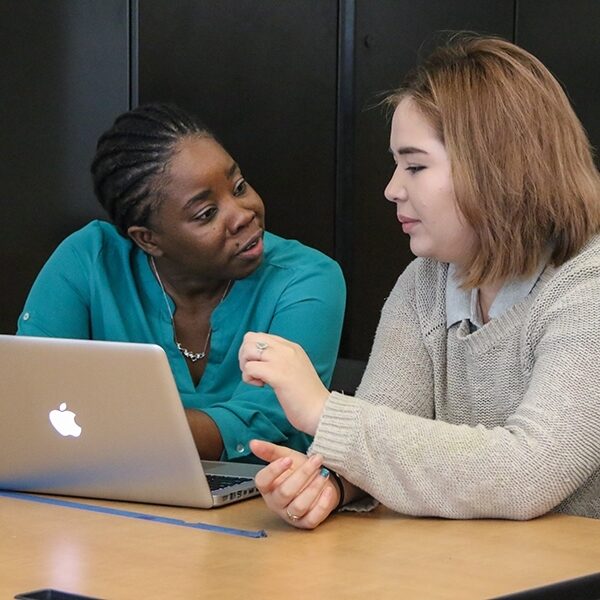
This blog was originally posted on Education Next.
Networks of schools across the country are increasingly using more personalized and blended learning strategies to create equitable access to high-quality instruction, increase student engagement and agency, and meet individual student needs. This has put a growing number of district and CMO leaders in charge of guiding efforts to scale personalization strategies across entire systems of schools, building on the successes of smaller pilots. Despite this expansion, system leaders frequently report feeling alone in their work, and lacking the time or resources to access how others are navigating the process. Case studies have helped, but these tend to be context-specific stories that can be hard to apply elsewhere.
In an effort to help close this information gap, The Learning Accelerator has recently completed a 10-month study to better understand the core challenges facing system leaders scaling blended and personalized learning innovations. Through interviews and a national survey, we asked more than 100 leaders from 60 systems across the country to tell us about the most important decisions they had to make when taking innovations to scale. We believed that by deliberately focusing on the choices leaders were making, as opposed to simply reporting on the actions they took, we could illuminate a number of important strategic decisions common to scale efforts in any context.
Seven Questions
Based on this research we discovered that, while there is no one right pathway to implementing blended or personalized learning, systems do seem to face a consistent set of implementation challenges, regardless of context. In a white paper entitled Look Both Ways, we have articulated seven of them as a series of questions that navigate competing priorities:
- How do we decide what the district should hold tight vs. loose? (Centralized vs. Decentralized Implementation)
- How fast should we be moving from pilot to scale? How can we achieve sustainability? (“Fast and Furious” vs. “Slow and Steady”)
- How do we decide where to pilot and how to allocate resources to schools? (Prioritize Need vs. Prioritize Readiness)
- How should we develop our talent and resource pipeline? (Build Internally vs. Buy Externally)
- How flexible should our district strategy be over time? (Fixed Strategy vs. Adapt with Experience)
- Should we scale a comprehensive model throughout our system or provide access to a series of independent, modular resources or tools? (“Prix Fixe” vs. “A-la-Carte”)
- How might practitioners best learn from one another? What should we be cataloguing and sharing throughout the district? (Share Best Practices vs. Share Process/Failures)
How Systems Vary in Approach
While an overwhelming majority of the leaders we engaged have dedicated energy to answering each of these questions, the way they answer them varies considerably. As the boxplot below demonstrates, for each question, there existed at least one district reporting a more extreme approach on each end, even for questions where the majority of leaders tended to cluster towards the middle.
Why is there so much variation between systems? Different pathways seem to depend, in part, on demographic and geographic differences. For example:
- Larger systems (60-100 schools) and lower income school districts were more likely to report centralized approaches to implementation.
- Large and urban districts were more likely to allocate resources based on need, while those serving small populations of students who qualify for free-and-reduced lunch were more likely to focus on a “readiness” criteria.
- Wealthier systems are more likely to engage external support, while districts serving lower-income populations make up a larger percent of those focused on internal capacity building.
The differences also depend on the vision for what blended or personalized learning are meant to accomplish in a school system. In Baltimore County Public Schools, for example, personalization has gone hand-in-hand with an effort to make system-wide practices more equitable for all students and has thus been more centralized. In contrast, Chicago Public Schools has built a decentralized scaling strategy to nurture a grassroots movement that focuses on school autonomy.
Guiding Trends
We also discovered a number of general trends that point to future opportunities for school systems working to scale new innovations:
It is hard to get past the “failure” dilemma. As educators, we recognize the importance of sharing not just the outcomes of our processes, but the bumps and struggles that led us there. At the same time, leaders face real pressure to show that innovations are succeeding. This dilemma showed up strongly in our research. On the one hand, systems are much more likely to pass along what they consider to be “best practices” (53%) over sharing their challenges, failures and the processes they have undergone (only 12%). Yet leaders also explained that hearing summaries of other’s practices rarely gives them sufficient information to replicate those successes in their own context. As one district leader explained, “Sure, I’d like to hear about new innovative models, but I also want the really specific stuff. I want the nuts and bolts (not just the end result). I want the inside story.” We believe this points to an important opportunity for leaders to engage more actively in conversations with their communities about why sharing failure is so difficult and acknowledge the risk involved. This may also open the door for leaders to create safer spaces for others to take risks by sharing their own mistakes more explicitly.
Systems need to focus on building internal capacity as much as investing in external supports and providers. While many systems have partnered with or hired external organizations to help support a system-wide shift to blended learning, these external relationships are often used to jump-start and/or validate the system’s approach. Over time, systems prioritize cultivating their internal pipelines of teachers and leaders to sustain the change over time. Leaders explained that this is particularly important when considering how long it takes to shift practices at a system level. “We’ve been doing this for five years and it still feels like we’re just beginning,” explained one leader. “I honestly think 25 years is where sustainability hits.”
We are still learning what “best practices” are. While we have seen some encouraging evidence of success, blended and personalized learning strategies are still being studied and refined. We found that leaders report using adaptive strategies (67%) over fixed ones (14%), more deliberate (slow) implementation strategies (68%) over accelerated ones (16%), and more modular approaches (51%) over packaged ones (27%). This may be a reflection that systems are still learning what works for students and leaders are seeing themselves as learners themselves, rather than as simply managing the oversight of a prefabricated implementation strategy.
Choose the Best of Both
Given the sector’s bias toward action, it can be easy to make quick decisions without examining the benefits and tradeoffs inherent in different approaches. By explicitly looking at the value of competing approaches (rather than dismissing either out of hand), leaders can design an implementation strategy that is not only more rigorous, but also more deeply considers the interests of all members of their community. While there are many pathways to blended and personalized learning implementation, looking at common challenges (and the different approaches to solving them) can speed up our ability to learn from each other and ultimately raise the bar on behalf of our students.

